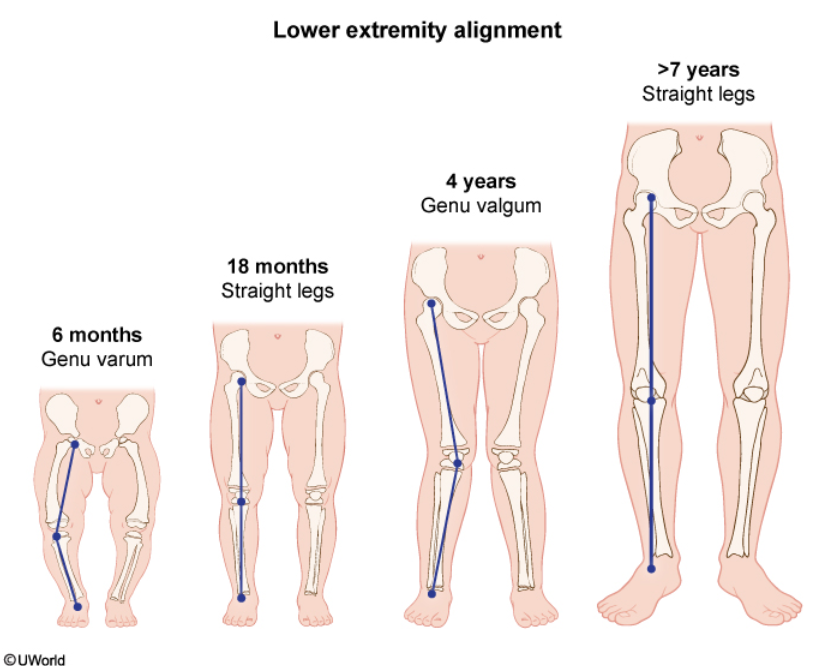pediatric bone disorders
- related: Pediatric

This patient has physiologic genu valgum, a condition in which the knees angulate toward midline, giving the appearance of "knock-knees." Genu valgum, part of the normal progression of lower extremity alignment, occurs in children age 2-5. Patients with physiologic genu valgum do not have significant pain or difficulty ambulating. They are of normal height. On examination, bilateral leg curvature is symmetric with no leg-length discrepancy and no medial thrust (ie, knee protrudes medially while walking); with walking, legs can appear to swing outward. With knees extended and pointed forward and distal femurs touching, <8 cm between the medial malleoli is considered physiologic genu valgum. Pes planus (ie, flatfoot) also commonly accompanies genu valgum.
Diagnosis is clinical; however, radiographs are indicated if there is a history of metabolic disease, lower-extremity fracture, infection, tumor, or joint swelling/warmth. Imaging is also indicated if genu valgum is severe (ie, medial malleoli distance >8 cm), progressive (ie, worsens after age 4-5), persistent (ie, present after age 7), unilateral, causing medial thrust, or associated with short stature. These findings are concerning for pathologic causes of genu valgum, which can be secondary to trauma, metabolic conditions, skeletal dysplasia, or neoplasms. Treatment of physiologic genu valgum is reassurance and observation, as spontaneous correction is expected by age 7.
Vitamin D supplementation is the treatment for rickets (vitamin D deficiency), which can result in pathologic genu varum or genu valgum. Rickets is unlikely in patients with adequate vitamin D intake, normal height and development, and no medial thrust.